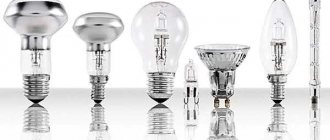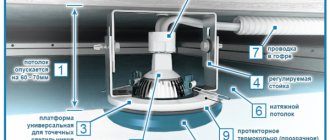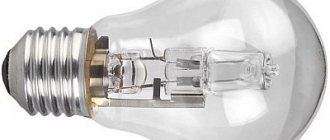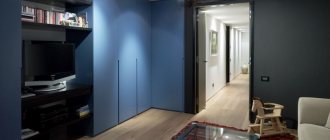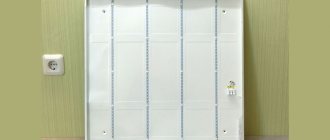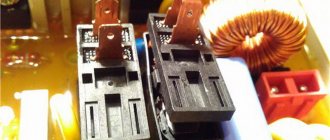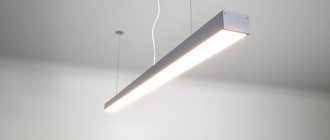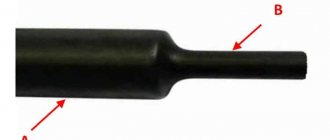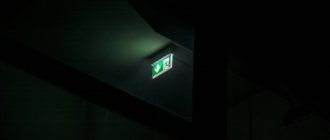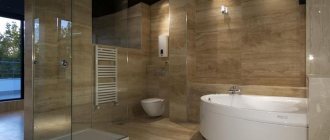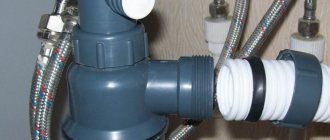Combining interior lighting is common
Properly selected lighting can create a favorable atmosphere of coziness and comfort in the home. It will favorably emphasize all the advantages of the interior of the room and hide the shortcomings.
At the same time, if the selection of lighting devices is ill-considered, discomfort and lack of safety will be ensured. You can choose the first chandelier you come across in a store and quickly regret it. But if we take this issue more seriously, then designer ceiling lamps may be the best solution to the lighting problem for the home.
Types of ceiling lamps
A wide selection of standard models, as well as numerous designer ceiling lamps, allow you to choose lighting fixtures to suit every taste. But in order not to get confused with such variety, it is worth deciding in advance on the type of ceiling lamp.
Types of spotlights
All ceiling lighting devices can be divided into:
- The type of light source used in the lamp. These can be regular incandescent lamps, fluorescent lamps or LEDs.
- Type of installation on the ceiling - suspended structures, recessed or surface-mounted lamps.
- Type of light - scattered, reflected or directed.
- The shape and material of the body - often the choice of certain shapes and materials depends on the style of the room and its functional purpose.
An equally important factor is the aesthetic component of the lighting device. Designer ceiling lamps are matched to the interior of the room.
Overview of types of lighting equipment
The lighting system is arranged in different ways. For each case, different types of ceiling lamps are selected: different in size, type of fasteners, external qualities and radiation intensity. The main groups of structures for installation on the ceiling: suspended, wall-ceiling, built-in. Some varieties stand apart, in particular, central chandeliers and the “plate” model.
Wall-ceiling structures
This is a universal option that will illuminate the room with the same efficiency when mounted under the ceiling and on the wall. Such models do not have pronounced external qualities. This allows them to be placed on any surface: horizontally and vertically oriented.
Wall-ceiling models: look good on vertical and horizontal surfaces, have gained high popularity in Russia.
The installation method is also similar for ceiling and wall locations. This group of lighting equipment is used when arranging the main lighting system of a room. One type is modular devices.
Built-in structures
This option stands out from a number of analogues due to its compact dimensions. It is available in a wide range of designs: hidden in a suspended structure; analogues with a protruding part. There are also round, rectangular and square designs.
Spot spotlights: sources of narrowly focused light, so they are often rotatable or fixed
Recessed lamps operate with a variety of light bulbs: halogen, LED, fluorescent. However, it is better to use only the last two options due to their minimal heating. These bulbs are suitable for suspended ceiling structures.
Recessed lamps are used in the form of local and decorative lighting, and provided that the calculation is done correctly, they can be freely used instead of the main light.
Suspended structures
Ceiling lamps of this group can be found in the form of central lighting of a room, or they are considered when zoning a room. The choice is influenced by the design and intensity of light.
Suspended models have a big advantage in organizing lighting, especially when installing other lamps will not be effective.
In the second case, they usually use devices with a fairly long decorated power cable (suspension) and in quantities of several pieces. A striking example is modular designs.
Central ceiling chandeliers
This is one of the types of pendant lighting equipment. It stands out from a number of analogues due to its attractive external qualities, as it is located in the center of the ceiling and always attracts attention.
Ceiling lamps in this option must certainly be selected taking into account the dimensions of the room and at the same time always fit into the interior design.
Chandeliers, in addition to the typical shape, are made not only from crystal, but from frosted, colored glass, and steel.
Dish lamps
This type of ceiling lamp in the shape of the lampshade is quite reminiscent of a plate/tablet, hence the name. The rounded shape of the diffuser allows you to completely hide the lighting element, which gives a uniform glow. The external characteristics of such devices are usually average, but they are highly efficient.
Ceiling lamps
Various types of lamps are used in ceiling lamps:
- Traditional incandescent lamps;
- Fluorescent lamps;
- LED bulbs.
Each type of light source has its own advantages and disadvantages. They are used for various types of ceilings.
Incandescent lamps for lighting
Traditional incandescent lamps have long given way to more advanced and technologically advanced light sources - gas discharge and LED lamps. The fragility of the structure, high power consumption, and significant sensitivity to voltage changes make the use of such light sources unprofitable.
But they are perfect for classic chandeliers, where the use of other types of lamps will not look entirely natural. The lamp bulb can have a variety of shapes. The most common incandescent lamps are in the form of a candle.
This source provides diffused light through the use of shades and lampshades. But incandescent lamps with directional light are also produced. Their bulb is partially coated with a thin layer of aluminum, which allows for localized local illumination.
At the same time, due to the strong heating of the lamp structure, such light sources cannot be used for suspended ceilings.
Fluorescent lamps for lighting fixtures
Fluorescent lamps have a long service life, higher light output and efficiency than incandescent lamps of similar power. But they have a limited limit on the number of lamp on-off cycles.
In addition, the design of the fluorescent lamp has a bulky ballast, which significantly reduces the scope of its application.
Types of fluorescent lamp designs
Low pressure fluorescent lamps are used for lighting inside buildings. The appearance of such a light source is most often not suitable for use in open lamps, unless this is an original decision by the designer. Fluorescent lamps provide good diffused light due to the phosphor applied to the bulb.
Previously, such light sources were mainly used for lighting in public buildings. Currently, compact fluorescent lamps, which have a base for E27 and E14 sockets, are widely used. Now these lamps are more often used in apartments and private houses. They are what is mainly meant by the concept of “energy-saving” lamps.
Types of compact fluorescent lamps
A serious disadvantage of lamps of this type is the mercury content in the design. Such products must be disposed of at the end of their service life, which is very expensive.
The destruction of fluorescent lamps is very dangerous to health
If possible, fluorescent lamps should not be used for lighting in children's rooms.
LED lamps for lighting
LED lamps are currently the safest and most economical light sources. Modern technologies have made it possible to use a fundamentally new approach to lighting. Such lamps are successfully used in outdoor lighting fixtures and inside buildings.
Fixtures for LED lamps often have a special design. The metal base of their body acts as a radiator to remove excess heat. It is possible to use LED lamps in conventional lighting fixtures, but then their energy efficiency and reliability will be significantly lower.
LED light sources have many advantages:
- Low power consumption;
- Compact dimensions;
- Reliability of the design;
- Long service life.
It is these advantages, as well as many other characteristics, that have allowed LEDs to begin to replace incandescent lamps and fluorescent light sources. In addition to standard LED lamp elements, LED strips for illumination have also become widespread.
Spotlights
Spotlights (surface and built-in) lamps are an integral part of modern living space. Proper lighting can highlight the beauty of the interior and hide its flaws. Technically well-placed lamps create an environment that is comfortable for the eyes.
Stretch ceiling with spotlights
Spotlights are best suited for additional lighting in large rooms, such as living rooms, bedrooms, children's rooms, and dining rooms. As main lighting, they are good for small spaces - bathrooms, toilets, dressing rooms and corridors. In small rooms, point sources distribute light evenly over the entire ceiling area. This allows you to illuminate all parts of the room equally.
The electrical equipment needed to connect the lamps takes up a certain part of the space in the house. The size of the niche above suspended ceilings depends on the type of lamp. If wiring is installed for halogen or fluorescent lamps, the suspended ceiling is placed approximately 8-12 cm below the main one, for LED spotlights - 6 cm.
Since the corridor and hallway are the passage part of an apartment or house, a low ceiling will not be noticeable. In spacious hallways, you can install a small chandelier as the main lighting, and built-in lamps as an additional light source.
If only spotlights are turned on in the room, a calm, peaceful environment with soft, subdued light is created. If the designer wants to emphasize the different levels of the stretch ceiling and decorate its protruding part, then you should first choose a chandelier, and select spotlights for it.
Prices for recessed lamps
recessed lamps
Built-in spotlights for suspended ceilings
Spotlights can be rotating or fixed . Rotating shades are designed to direct light only to a specific area - a desk, a section of the kitchen table or onto a wall, in order to advantageously show its texture.
According to the degree of protection from moisture, these electrical appliances are divided into moisture-proof lamps and lamps for dry rooms . Choosing moisture-proof electrical appliances is very important if they are to be installed in bathrooms, toilets and basements.
On the lighting market you can see hundreds of types of spotlights. They are made from a wide variety of materials - glass, plaster, aluminum, crystal, plastic. The lampshades are decorated with stained glass overlays, rhinestones, carved wooden elements, and metal openwork details. If, according to the designer’s idea, the lamp should be hidden or unnoticeable, you can choose the most minimalist option (a white lamp with the same white ring around it).
Installation of spotlights in a suspended ceiling
The design of modern apartments and private houses is very diverse - you can find many styles in their decoration, from loft and baroque to high-tech. A wide selection of spotlights does not in any way limit the imagination of the designer and customer.
Crystal spotlights are interesting and very beautiful. They can diffuse light, creating rays and patterns on the ceiling and walls. These electrical appliances come in different styles. Lamps in the Art Nouveau style have geometric, square or rectangular decorative elements; in classical style models you can see hanging parts made of glass or crystal. Floral style models combine combinations of glass leaves, buds and petals. Crystal lamps with LEDs built into the edges or inside are especially beautiful.
A crystal lamp will not cast glare if a lamp with a matte finish is inserted into it. For the same reason, it is not recommended to install fluorescent light sources in it. LEDs are the ideal choice in this situation.
Chandelier prices
chandelier
Chandelier for suspended ceiling
Shape of ceiling lamps
The variety of different forms of lamps is explained by the fact that there are no special restrictions in their manufacture. The classic shape remains round or spherical.
This is the one that occurs most often. But in modern interior designs, square-shaped designer ceiling lamps, rectangular and triangular designs have also become widespread.
The ability to use LED strips in lighting has allowed designers to create lighting fixtures of the most fantastic shapes.
Materials for ceiling lamp housings
The lamp body can be made of a wide variety of materials.
If these are lampshades that act as a light diffuser, then the following are most often used:
- Glass – glass lamps transmit light perfectly and are not afraid of overheating from incandescent lamps. But the design of the lighting fixture is easy to break.
- Plastic is a fairly cheap material with good light transmittance.
- Crystal has unsurpassed reflective characteristics (read more here). Crystal designer ceiling lamps are often made in single copies. Crystal is mainly used in the designs of hanging chandeliers.
Lampshades can be made from:
- Fabrics - such designs add a cozy atmosphere to the room, making the light soft and pleasant to the eye.
- Wood – most often these are original designer ceiling lamps, manufactured in small batches. They will fit perfectly into the design of a country house or cottage with a rustic interior.
- Metal - the plasticity of the material allows you to create a wide variety of housing shapes for lighting fixtures. Metal lamps look great in modern design styles.
- Porcelain.
Combinations of body materials are often found. Original and exclusive ceiling lamps can be made from a wide variety of materials.
Types of installation of lighting fixtures on the ceiling
Installation of lighting fixtures on the ceiling can be done in several basic ways:
- Pendant Lights – Traditional chandeliers, single pendant lights or groups of lighting fixtures.
- Recessed luminaires are mainly used in the construction of frame ceilings.
- Surface-mounted lighting fixtures can be used for any type of ceiling. They are often used when the height in the room is insufficient.
Currently, a combined lighting device has become widespread, when different types of installation of lamps are used simultaneously.
Ceiling pendant lights
The traditional type of pendant lamp can be called chandeliers. They are equipped with one lamp or several. Large-sized structures can also be made in multi-tiered versions. For rooms with high ceilings, such as on staircases, long lamps are often hung.
To install a hanging chandelier, you need special fasteners that can withstand the significant weight of the structure. Most often, only one pendant lighting fixture is used in a room, which significantly reduces the cost of electrical wiring.
Instead of a chandelier with several lamps, you can use a group of single-lamp lamps located in one place.
Beautiful group of single lamp pendant lights
Quite often, pendant lighting fixtures are installed in combination with built-in lamps.
Recessed ceiling lights
This type of lighting is used in cases where the room has a suspended or suspended ceiling. You can place several small spotlights under the frame; their number is unlimited. Currently, this type of lighting has become very popular.
Such light sources can be used as the main type of lighting in a room, or used as additional lighting.
Due to the fact that recessed ceiling lamps can be placed anywhere, they can significantly simplify the task of zoning a room. In this case, it is recommended to install separate switches for each zone.
Zoning the kitchen using lighting
Important! When conducting wiring for the installation of lighting fixtures, special attention should be paid to carefully securing the cable to the ceiling frame. It should not hang freely.
Rotating models of recessed lamps can change the angle of illumination. Such lighting devices are convenient for emphasizing individual interior details with the help of light.
Beautiful rotating lamp
The directional light of rotating lamps allows you to illuminate only the necessary surface.
Surface mounted ceiling lights
Often overhead designs of ceiling lamps are used in rooms with low ceilings. But they are also common in ordinary rooms, especially if a complex lighting system is intended.
A hanging chandelier is a rather bulky structure and takes up a significant amount of space. Surface-mounted ceiling lamps solve this problem: they can be placed as close as possible to the ceiling surface, increasing the area of the light flux due to the horizontal placement of light sources.
If you plan to create a complex lighting system in a room without using a frame ceiling, then overhead lamps are the most acceptable option.
Application of LED strip in lighting
Modern technologies in lighting technology have made it possible to create a completely new type of lighting - LED ceiling lighting. Illuminated ceiling designs have become very popular when installing suspended or suspended ceiling structures.
Advice! The tape can be placed openly or hidden under the ceiling structure. This type of lighting provides diffused light, favorable for relaxation. LED lighting is mainly used as additional lighting and can be perfectly combined with other lighting devices.
It is worth choosing the color scheme of the lighting to match the overall style of the room.
Combined lighting
Nowadays, more and more often, several types of lighting devices are used simultaneously in a room. This is especially true when installing multi-tiered frame ceilings. In this case, designer ceiling lamps are selected depending on the design of the stretch or suspended ceiling.
The combination of ceiling, wall and local lighting allows you to create an individual atmosphere in any room.
How to choose types of ceiling lights depending on the type of room
- Corridor
Tips for organizing corridor lighting:
- For a room with low ceilings, in order to visually increase its volume, it is better to install lighting sources so that the flow of light is directed towards the walls and upwards.
- When the ceiling height is below average, halogen lamps are used to create original lighting.
- To visually expand the space of the corridor, ceiling light fixtures are installed so that the light is directed towards the walls.
If the ceiling in the room is high, then it is advisable to install hanging chandeliers so that the light falls on the floor.
- Kitchen
Several types of lighting can be used: basic or general (to illuminate the entire room) and additional in the form of spotlights or wall sconces (to illuminate the cooking area or create coziness in the dining area).
- Bedroom
To properly organize lighting, it is important to decide where the bed will be placed. The location of the electrical cable depends on this. Here you can also use a combined ceiling lighting scheme: the main one - with the installation of a chandelier in the center of the room - and additional (local) in the form of wall-mounted lighting fixtures at the head of the bed with halogen bulbs.
- Living room
In the center of the room, you can install the main source of lighting in the form of a chandelier, taking into account the height of the ceiling and the area of the room. In a large room, a large chandelier will look very interesting. For a small living room, the optimal solution would be to install built-in ceiling lights, which will visually expand the space of the room.
- Bathroom
The optimal solution would be to install light sources with matte or transparent shades. If the ceiling is very high, then you can choose a pendant chandelier; if it is low, you can choose several wall-mounted fixtures. To prevent the flow of light from being distorted, you should avoid types of lighting equipment with shades made of colored glass.
- Balcony
Since the room dimensions are small, it is better to choose the following types of light sources:
- compact table lamp;
- ceiling lamp;
- wall sconce.
A good solution for lighting a balcony or loggia would be types of devices designed for outdoor use.
Key points to consider when choosing a ceiling lamp
- To choose the type, shape, size and number of lighting fixtures needed to fully illuminate a room, you need to evaluate its size and functionality.
- Bright lighting is more suitable for the living room, hall. In the bedroom or kitchen, you can arrange softer, subdued light.
- To illuminate large rooms, it is best to choose large pendant chandeliers that can provide enough light. It is also possible to install several lamps. In many cases, a combination of several types of lighting fixtures is suitable.
- In rooms with low ceilings, pendant lamps should not be used.
A huge selection of different lighting fixtures allows you to make lighting very convenient, functional and aesthetic. Designer ceiling lamps will add individuality and uniqueness to the interior.
Where are different types of ceiling lights used?
Overhead and hanging models
In the interior, suspended ceiling lighting fixtures are often used to create different styles. For their successful installation, it is necessary to have a rigid surface for mounting and the correct choice of overall dimensions of the lighting equipment.
For large rooms, to ensure an acceptable level of illumination, large ceiling lamps are used. In such chandeliers, several lamps are most often installed (for example, cascade chandeliers). The design of the devices is quite bulky, and it is better not to install them in rooms with low ceilings.
Elongated surface-type ceiling lamps are distinguished by their versatility and ease of installation; they can be mounted on different types of ceilings at any angle.
Lighting fixtures with an elongated design visually increase the volume of the room.
Flat-shaped lighting equipment can be mounted both on the ceiling and on interior partitions. This is the best solution for small spaces, as it saves space. Such devices have a soft, diffused light that is pleasant to the eye. They are often installed as main lighting due to their high functionality.
Ceiling lamps of suspended and surface-mounted types are installed as the main source of lighting in bedrooms, hallways, toilets and bathrooms.
The advantages of overhead and hanging models include:
- Installation is possible on almost any type of surface.
- Wide range of models of various shapes.
- A universal solution for both apartments and offices.
Mortise and built-in models
This type of lighting equipment is used with structures such as suspended or suspended ceilings, ceilings with a plasterboard box. The devices are functional and economical, suitable both as the main light source and for decorative lighting.
Recessed ceiling lamps can be used in the form of decorative lighting or in a combined scheme: the inner circuit is the main lighting, the outer circuit is decorative.
The scope of application of this type of ceiling lighting is kitchens, living rooms, hallways, etc.
Recommended articles on this topic:
- Quick apartment renovation
- Stages of renovation in an apartment
- Turnkey cosmetic repairs
Recessed LED types of ceiling lights are economical in energy consumption and easily combine with any interior, so they are often used by designers to decorate rooms for various purposes.
The main advantages of mortise and recessed ceiling fixtures include:
- Economical in energy consumption (using LEDs).
- Dimensions.
- Low heat generation.
- Directional luminous flux.
- Lack of inertia in increasing light flux.
